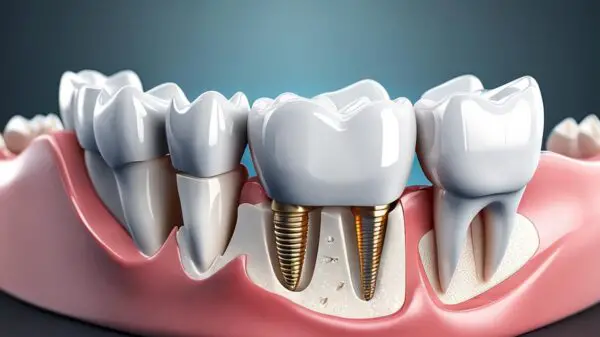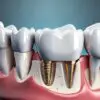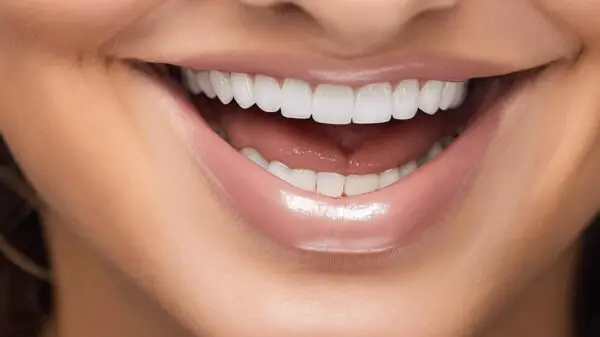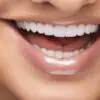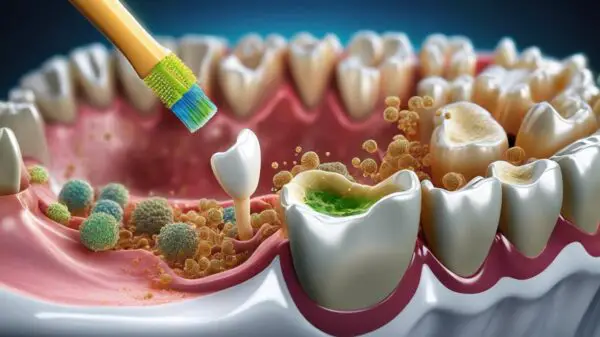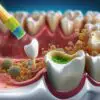Keeping White Teeth Is Hard
Having teeth that are naturally white and bright is something that many people strive for. But why does it seem like teeth can easily become stained, discolored, and dull? One of the main reasons teeth stain so easily is because of what we eat and drink. Certain foods and drinks like coffee, tea, soda pop, wine, dark sauces, and berries contain pigments or chromogens that bond to the hard surfaces of teeth. Another cause of staining on teeth is smoking or using a type of tobacco product; the nicotine in these products leaves behind a brown residue on teeth over time. However, there are ways to get rid of teeth stains. So, does Toothpaste Remove Red Wine Stains?
Yes, toothpaste can help remove red wine stains from teeth. Make sure to choose a whitening toothpaste and brush in small circles around each tooth with the toothpaste. To remove as much of the teeth staining, brush thoroughly for two minutes and then rinse your mouth with water.
Unfortunately, teeth don’t just naturally stay white forever—even without consuming any food or drink. As teeth age, the enamel that covers teeth can thin out and allow the dentin beneath it to show through. This causes teeth to take on a yellowing color.
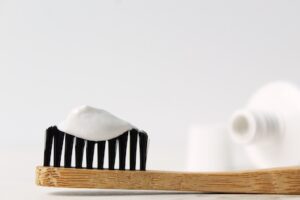
Stained Teeth
It is a concern because no one wants to look in the mirror and see anything but a white smile. Stained teeth can be an indication of poor oral hygiene, but they don’t necessarily mean that your teeth are bad. Stains on teeth are caused by a variety of factors, including diet, smoking, medications, and age-related changes to the surface enamel of the teeth.
Although teeth naturally darken over time due to wear, teeth can also become discolored from certain foods and drinks like coffee, tea, red wine, and dark sodas. Tobacco use is another common cause of teeth staining. In addition to food and beverages, teeth may become stained from certain antibiotics or other medications used for medical treatments.
The type of stain on your teeth can also determine if your teeth are healthy or not. If the teeth have a yellowish tint, this could mean that you need to improve your oral hygiene habits, like brushing and flossing properly. Other types of stains, such as brown or black spots, may be caused by tooth decay or cavities and can lead to more serious dental problems if left untreated. As foods and drinks such as candy and soda have lots of sugar, and sugar can cause cavities.
What Foods and Drinks Are The Most Common Culprits?
The appearance of teeth can make a significant difference to one’s overall appearance. Unfortunately, certain foods and drinks have the potential to stain teeth, leading to discoloration and a less attractive smile. For those concerned with teeth staining, it is important to be aware of which items are more likely culprits.
- Coffee: Perhaps one of the most notorious teeth stainers, coffee can leave teeth looking yellow and dull.
- Red Wine: Red wine may be a favorite among many adults, but it is also a huge teeth stainer.
- Tea: Like coffee, tea contains tannins that are known to discolor teeth.
- Berries: Although berries are an excellent source of vitamins and minerals, they can leave teeth looking stained purple or blue.
- Citrus Juices: The high acidity in orange juice can cause teeth to become easily discolored, as it erodes enamel over time.
- Sports Drinks: The combination of high acidity and brightly-colored dyes in sports drinks can lead to teeth staining over time.
- Soy Sauce: Soy sauce contains teeth-staining compounds, such as tannins and chromogens.
These foods and drinks are some of the most common culprits when it comes to teeth staining. To help prevent teeth discoloration, it is important to practice good dental hygiene and limit the consumption of any food or drink that may stain teeth. Additionally, teeth whitening procedures can be done to help reduce stains and return teeth to a more natural-looking shade.

What About Red Wine?
When it comes to teeth stains, red wine is one of the most notorious culprits. Although there are a number of treatments available to get rid of teeth stains caused by red wine, such as professional teeth whitening or in-office bleaching, many people are wondering whether or not toothpaste can help remove stubborn discoloration. The answer is yes—toothpaste can help remove red wine stains from teeth.
When using toothpaste to remove teeth stains, it’s important to choose one with whitening properties. Many teeth-whitening products contain abrasive ingredients that work to scrub away teeth discoloration gently. You can also add a drop of hydrogen peroxide to your toothpaste for an extra whitening boost. Once you have the right type of toothpaste, wet your teeth and start brushing in small circles around each tooth with the paste, being sure to pay special attention to any stained teeth. Brush thoroughly for two minutes, then rinse your mouth with water and spit out the excess.
It’s important to note, however, that teeth whitening toothpaste may not be able to remove the toughest teeth stains caused by red wine. If your teeth are still discolored after brushing with toothpaste, it’s best to consult a dentist for professional teeth whitening treatments.

What Other Options Are There?
Red wine can be a delicious treat, but it can leave an unwelcome mark on teeth if consumed in excess. Thankfully, there are alternative ways to remove red wine stains from teeth that don’t involve harsh chemicals or tooth-whitening products.
Using baking soda and hydrogen peroxide is one of the simplest methods for removing stubborn red wine stains from teeth. Simply mix together equal parts of baking soda and hydrogen peroxide to form a paste, and then brush your teeth with the mixture for one minute. Baking soda acts as a mild abrasive and helps to remove surface stains, while hydrogen peroxide is an effective bleaching agent that can help get rid of deeper discoloration.
Another option is to use strawberries and baking soda. In a small bowl, mash up a ripe strawberry and mix it with some baking soda to form a paste. Then brush your teeth with the mixture for two to three minutes. The malic acid in the strawberries acts as an astringent that helps break down stains, while baking soda works to remove them from teeth.
Alternatively, you can try an at-home teeth whitening kit that contains hydrogen peroxide as the active ingredient. These kits come with a special mouth tray and teeth whitening gel that is applied to teeth for a certain period of time. The hydrogen peroxide helps to break down tough red wine stains and can help restore teeth to their original whiteness.
Another great way to prevent your teeth from staining and prevent other issues and disease are to go to the dentist. As frequent dental checkups help promote white teeth.
How Long Is the Process?
If you are wondering if teeth stain removal happens right away, the answer is not always. Depending on the stains and type of whitening treatment used, it can take several days to weeks to see results.
The amount of time it takes for teeth stain removal to take effect is dependent on the type of teeth whitening product used. Teeth-whitening strips, which are applied directly to teeth, usually require two or three treatments over multiple days and may show results in a few days. Professional teeth whitening treatments done at the dentist’s office can be more successful at removing deep teeth stains; however, they are more expensive and may require additional treatments for a more noticeable teeth whitening effect.
It is important to note that some teeth stains may be too difficult to remove even with teeth whitening products or treatments. In these cases, your dentist may recommend an alternative approach such as dental bonding, veneers, or other cosmetic dentistry procedures.











